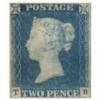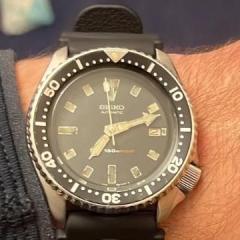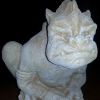-
Recently Browsing
- No registered users viewing this page.
-
Topics
-
Posts
-
By ManSkirtBrew · Posted
Right now I'm making do with a similar micrometer (the one below is $45 shipped but you can find better deals) and a $20 stand. You do have to be excruciatingly careful measuring jewels, since there's no table, but if you don't have the $500 to throw around, it's a nice option. -
As I kid, I'd watch Godzilla stomping over buildings and cars and I'd think to myself: Tokyo is a really dangerous place to live... . Cool watch!!
-
By Neverenoughwatches · Posted
Next one up an AS 554, looks like a bit more to this one. First job is to check thickness, most springs are somewhere between .3 and .4, this one measures .35, that matches in with the .4 spring steel i ordered. So for marking up a permanent marker comes in handy to colour up the steel to be marked later with a scriber once its dry. Bestfit provide the extra bit of info for the jumper spring that is missing. -
By Hawaiikook808 · Posted
Thanks again, Marc. Super helpful. I was wondering what the hole was for, and now it makes perfect sense. With your help and the other members here, it looks like I'm good to go with my Seitz tool set. I had to order some replacement pushers, but with those, the set is complete and in good condition. Now, I need to figure out what tool to buy to measure jewels (amongst other watch-related parts). I had my eye on the JKA Feintaster micrometers, but people get crazy bidding on them for $400-600 USD. I was thinking of just a regular digital micrometer (Mitutoyo). Thoughts? Mahalo. Frank -
Yep, that's exactly how it should fit. The reamer shank is tapered and the socket in the spindle is also tapered so that the one centers in the other and is gripped tightly. If there is any wobble when the reamer is seated as far it will go then there is a problem. The cross hole in the spindle is to allow you the push the reamer back out again. If the reamer seated much deeper then it would limit the access for pushing it back out again. Here is one of mine for comparison.
-










Recommended Posts
Join the conversation
You can post now and register later. If you have an account, sign in now to post with your account.
Note: Your post will require moderator approval before it will be visible.